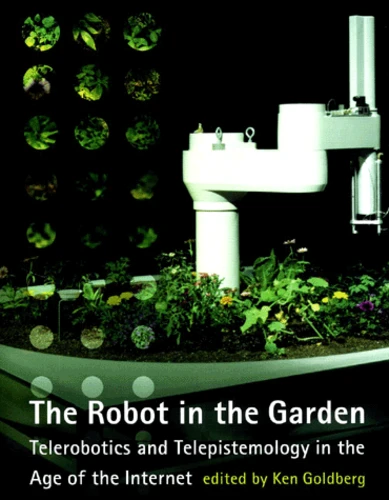The Robot In The Garden. Telerobotics And Telepistemology In The Age Of The Internet
Par :Formats :
- Paiement en ligne :
- Livraison à domicile ou en point Mondial Relay indisponible
- Retrait Click and Collect en magasin gratuit
- Réservation en ligne avec paiement en magasin :
- Indisponible pour réserver et payer en magasin
- Nombre de pages366
- PrésentationBroché
- Poids0.62 kg
- Dimensions17,6 cm × 22,7 cm × 2,1 cm
- ISBN0-262-57154-4
- EAN9780262571548
- Date de parution11/10/2001
- ÉditeurMIT Press (The)
Résumé
The Robot in the Garden initiates a critical theory of telerobotics and introduces telepistemology, the study of knowledge acquired at a distance. Many of our most influential technologies-the telescope, telephone, and television-were developed to provide knowledge at a distance. Telerobots, remotely controlled robots, facilitate action at a distance. Specialists use telerobots ta explore environments such as Mars, the Titanic, and Chernobyl. Military personnel increasingly employ reconnaissance drones and telerobotic missiles. At home, we have remote controls for the garage door, car alarm, and television (the latter a remote for the remote). The Internet dramatically extends our scope and reach. Thousands of cameras and robots are now accessible online. Although the role of technical mediation has been of interest to philosophers since the seventeenth century, the Internet forces a reconsideration. As the public gains access to telerobotic instruments previously restricted to scientists and soldiers, questions of mediation, knowledge, and trust take on new significance for everyday life. The seventeen essays in this volume, by leading figures in philosophy, art, history, and engineering, are organized into three sections: Philosophy; Art, History, and Critical Theory; and Engineering, Interface, and System Design.
The Robot in the Garden initiates a critical theory of telerobotics and introduces telepistemology, the study of knowledge acquired at a distance. Many of our most influential technologies-the telescope, telephone, and television-were developed to provide knowledge at a distance. Telerobots, remotely controlled robots, facilitate action at a distance. Specialists use telerobots ta explore environments such as Mars, the Titanic, and Chernobyl. Military personnel increasingly employ reconnaissance drones and telerobotic missiles. At home, we have remote controls for the garage door, car alarm, and television (the latter a remote for the remote). The Internet dramatically extends our scope and reach. Thousands of cameras and robots are now accessible online. Although the role of technical mediation has been of interest to philosophers since the seventeenth century, the Internet forces a reconsideration. As the public gains access to telerobotic instruments previously restricted to scientists and soldiers, questions of mediation, knowledge, and trust take on new significance for everyday life. The seventeen essays in this volume, by leading figures in philosophy, art, history, and engineering, are organized into three sections: Philosophy; Art, History, and Critical Theory; and Engineering, Interface, and System Design.


